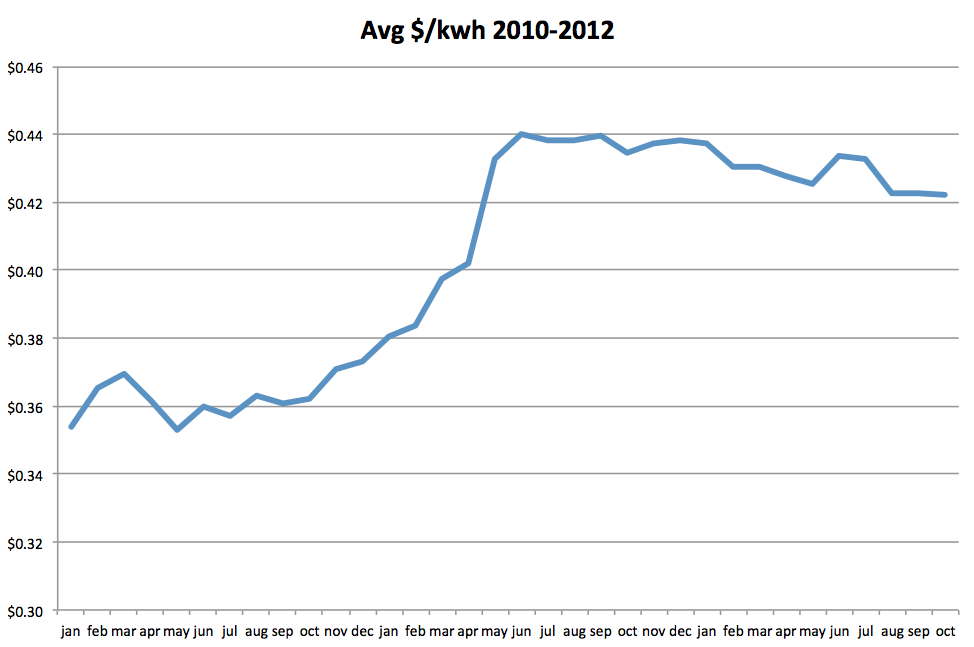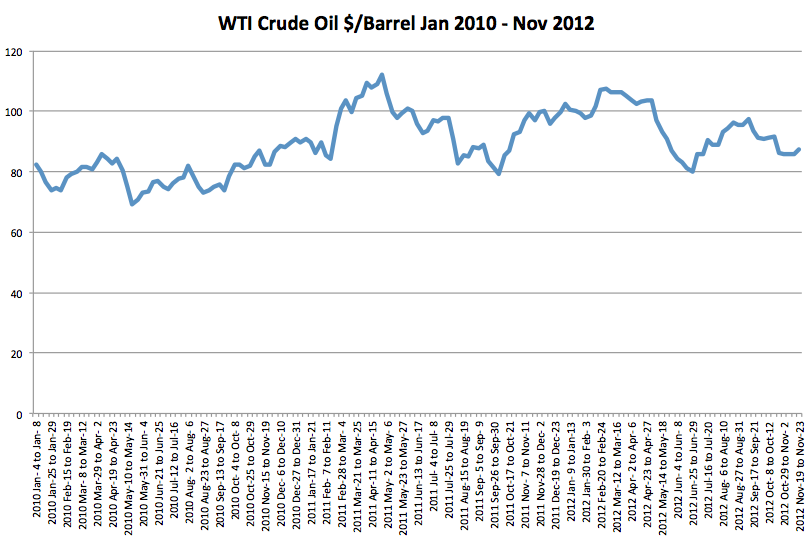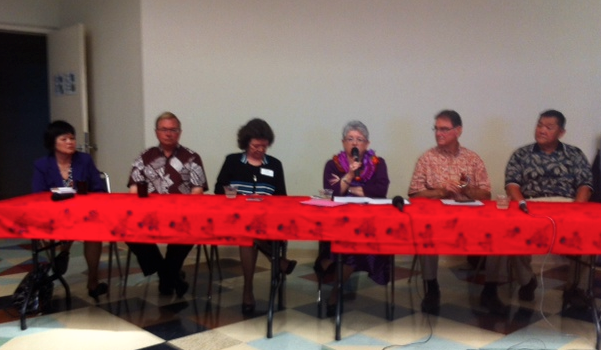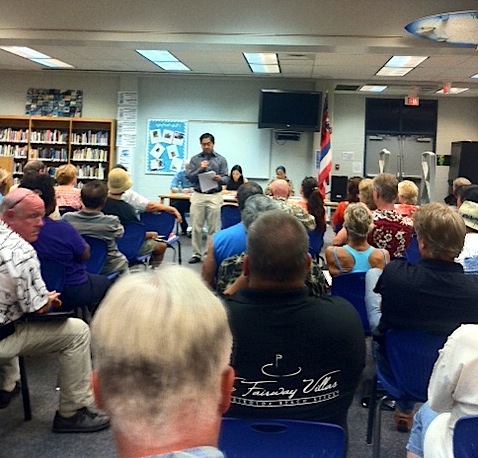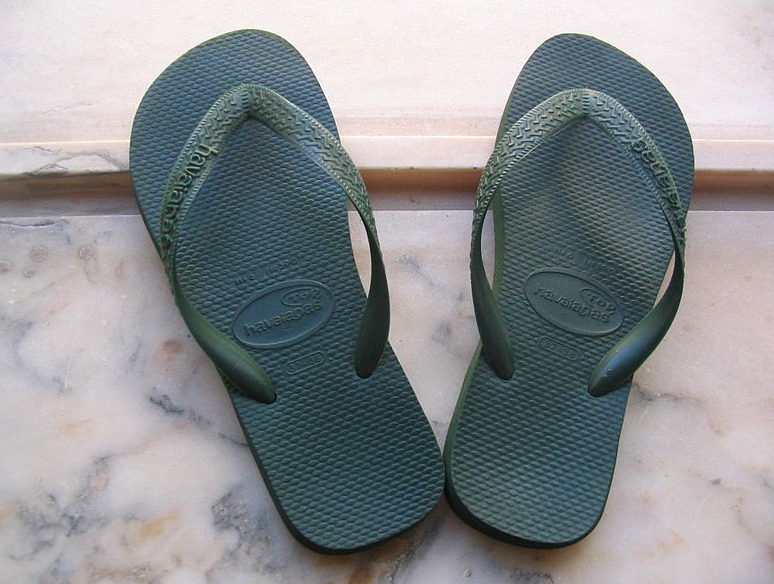Richard Ha writes:
Here is Bill Walter’s testimony against HELCO’s proposed 4.2 percent rate increase, which he submitted to the PUC. Tomorrow (Friday, November 30, 2012) is the deadline for all testimony against this rate increase, as well as the proposed Aina Koa Pono project. You can email your testimony to: hawaii.puc@hawaii.gov.
It’s in the interest of the utility, as well as in the interest of the people, that we all seek lower electricity rates.
To: hawaii.puc@hawaii.gov
Subject: HELCO RATE INCREASE OF 4.2% – Docket 2012 – 0099
Commissioners,
Thank you for the opportunity to write you on this subject. At some point, the questions before you on various rate increases proposed by HELCO/HECO are simple:
•How much is enough? and
•When do we draw the line on increases?
We understand that while the questions are essentially fairly simple, finding answers can seem very difficult. Those wanting the rates to increase run through myriad statistics, data, logic and come up with apparently compelling reason. These answers come in an age old context of how we, as a society that is primarily market based, handle a monopoly supplier of an essential ingredient of our modern life. Over the generations the solution has typically revolved around ensuring a reasonable return on company (hence, stockholder) assets while providing a level of service that ensures quality to the community. While in a general case over the last 75 years that may have been reasonable, we suggest questioning that – at least for this community at this time. Please note the following:
• As it is, Hawaii Island rate payers pay four times the US national average for electric power. We pay a 25% premium compared to Oahu – today.
• Hawaii Island residents include among the most economically challenged in the State of Hawaii. While certainly not the only reason, the high cost of power works to keep our residents economically challenged. Why?
The cost of operating any business with more than a marginal energy input on the Island experiences higher energy costs than competition from most other locations. When you add to this the cost of getting our product to market (or the market to our product in the case of tourism) the competitive hurdle can become prohibitive to overcome. This increase will only add to that hurdle.
• Because of the integral nature of electric power to our way of life, the cost of electricity is little different in effect from the most regressive of taxes. If you look at this simile several issues jump at you:
In the last four years governments across the country have been highly reticent to raise taxes understanding the negative impact higher taxes would have on the economy and on those most economically challenged. This relates back to the point above – namely that higher electric power costs have a depressing affect on the economy of the Island of Hawaii, at their current level.
Local governments – including ours here on the Island of Hawaii – have taken extraordinary steps to reduce the cost of government services while retaining government service levels. On this island that has included furloughs of County workers, layoffs, employment freezes, job sharing, looking for efficiencies that allow for reduced expenses across the board, reductions in executive staff salaries, suspension or reduction in non essential services – and the list goes on. It is common place to hear of businesses on this island taking similar – and in some cases more radical steps to reduce expenses. It is uncomfortable, but notable that we have heard of no such steps taken by our utilities in order to try to pass on to the community reduced costs that may be helpful in these difficult times. In fact, what we have heard is like this – requests for higher prices. Somehow that difference is hard to take.
•The long term reality is that power generation is moving to dis-integration much as phone service has rapidly moved in that direction. It would be wise for both the Commission and the companies to ask if it is not time to consider this coming dis-integration. The only way for the current system to survive in the long run is to be in a price reduction, not price increase mode. The cost of standalone competition is inexorably being reduced. Sooner than later only those who cannot afford to get off the grid will have departed it – how will that work and will the commission have been a part of that scenario?
So my short answer to these questions is that “enough is already enough” and the line needs to be drawn now – for the survival both of the island economy and for the survival of the utility.
My personal response has been to join the Big Island Community Coalition looking for ways to reduce power costs. I am becoming proactive in this direction. We ask that the commission and, indeed, HELCO/HECO become proactive in this direction as well. Better that we spend our efforts looking for cost reducing solutions than for cost increasing reasons.
Thank you for your consideration.
Bill Walter

